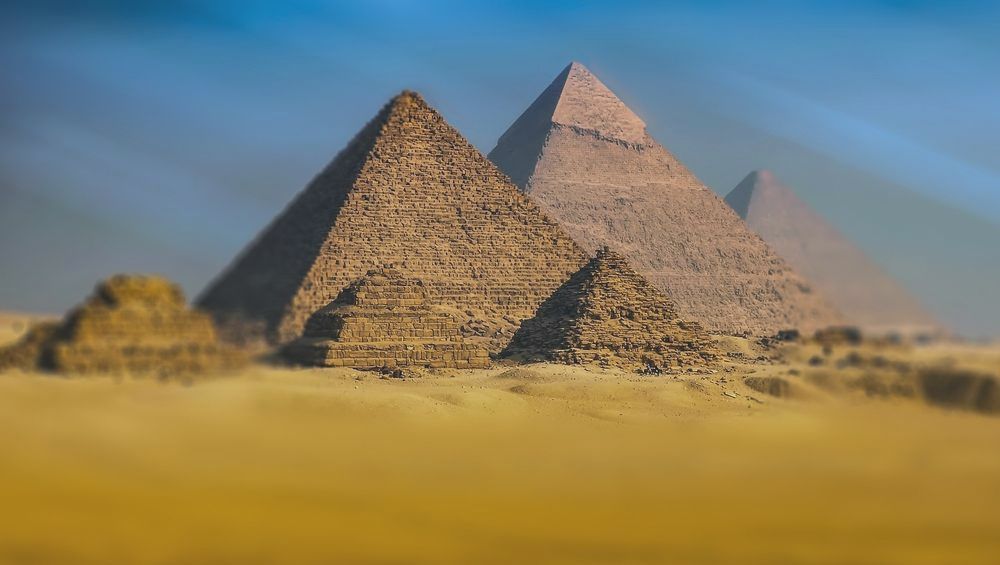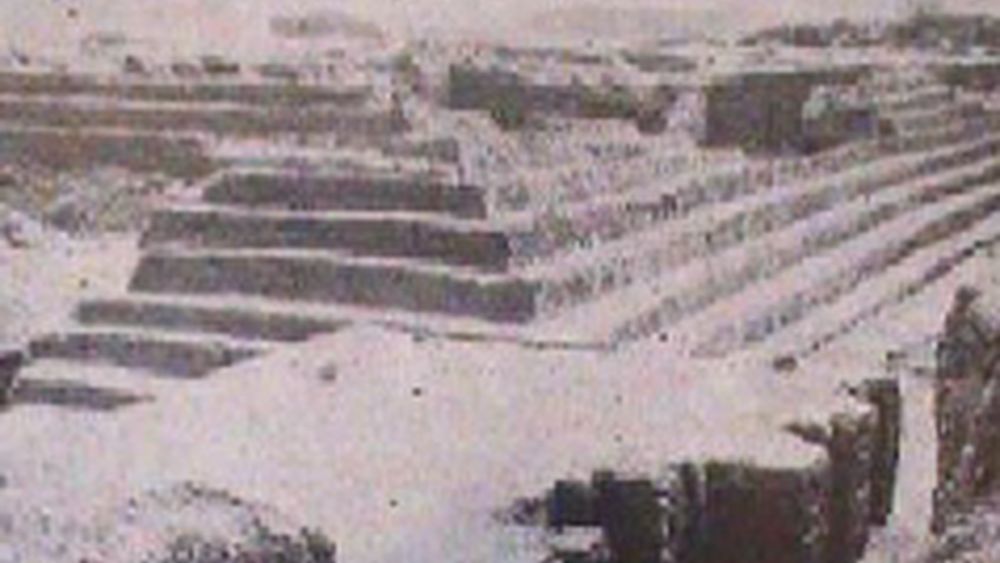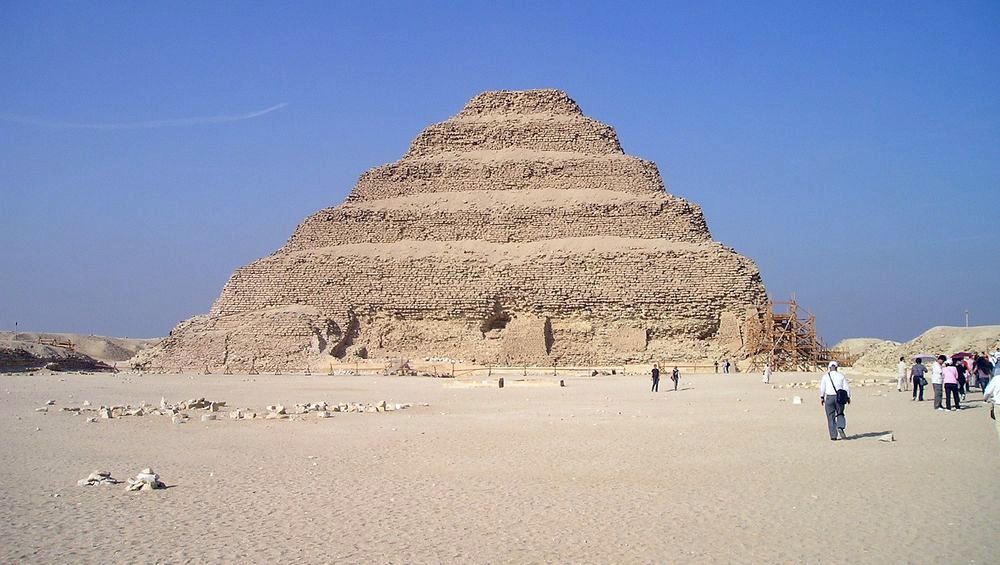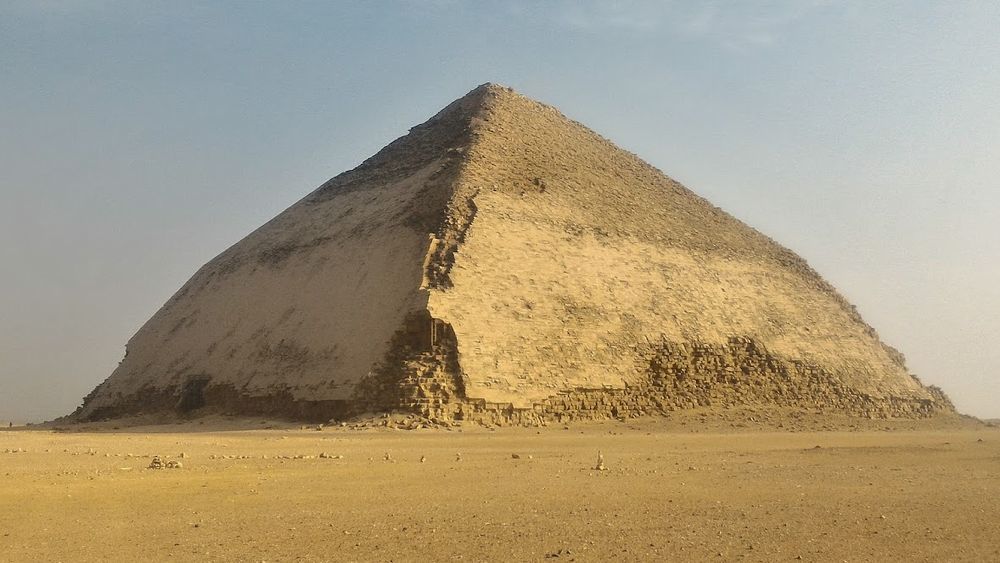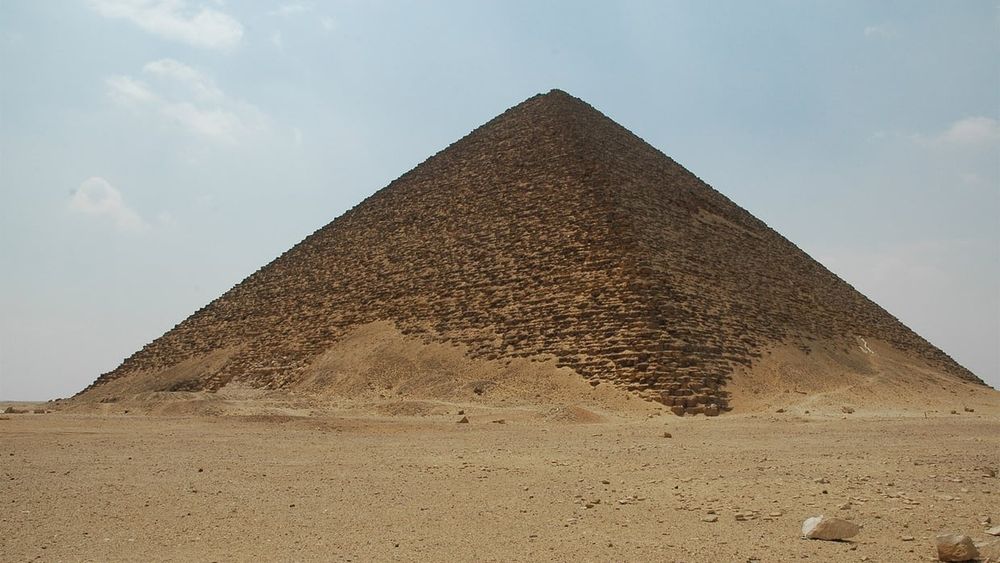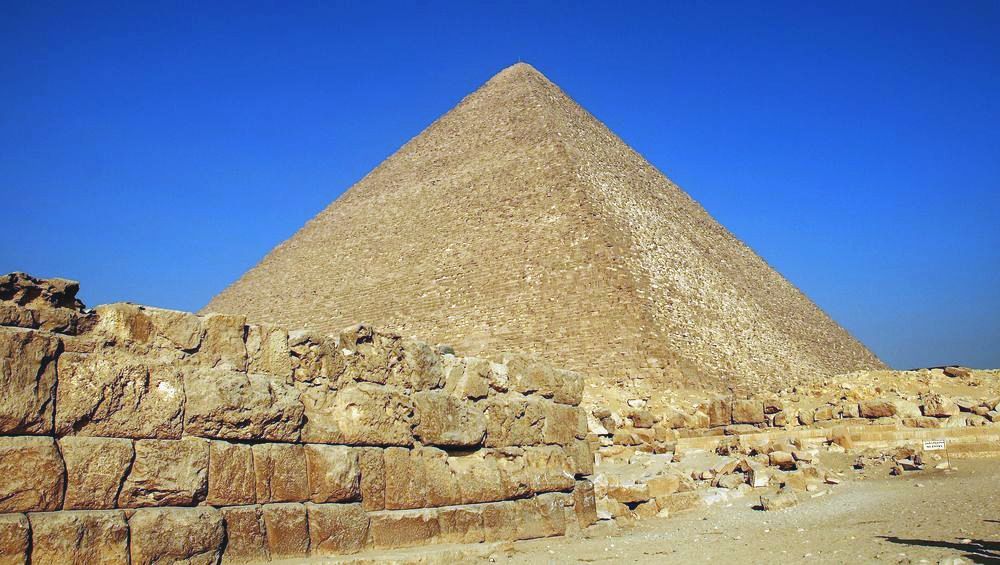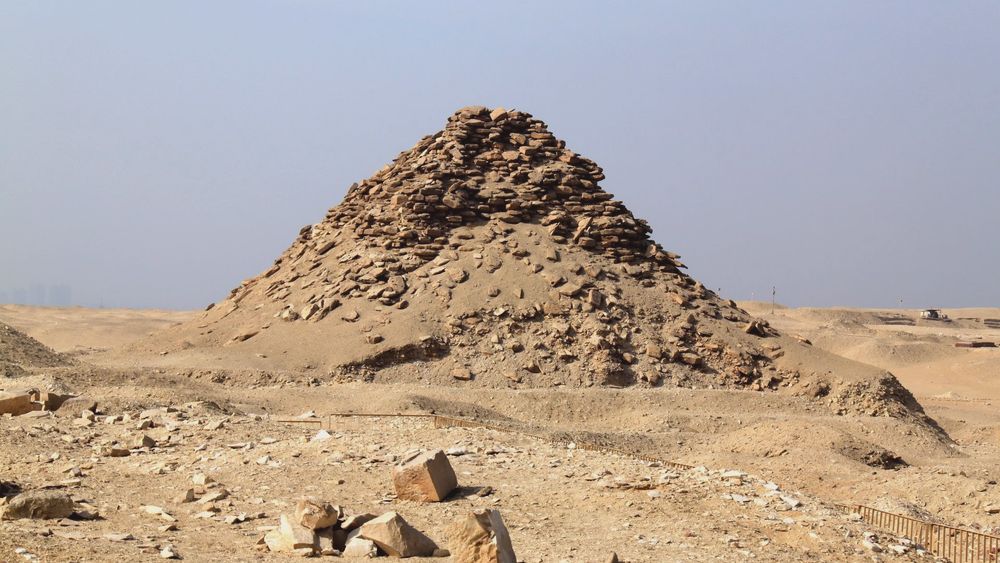When one contemplates today the pyramids of the Giza plateau one is struck by their gigantism, but one does not ask the question of why a tomb is of this form.
To think about it is rather surprising, what is a pyramid a tomb? In fact the answer lies in the evolution of architecture during the first Egyptian dynasties.
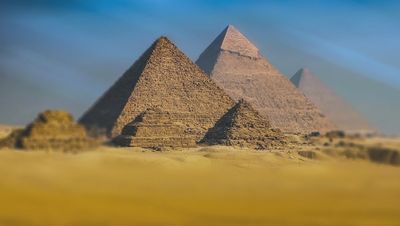
The three pyramids of Giza
Evolution of the architecture
In the history of humanity, the Egyptians were the first to build pyramids. The commonly accepted theory of why they arrived at this geometric form is quite simple, since it is the natural evolution of a traditional tomb.
The ancient Egyptian traditional tomb is the mastaba, which is nothing more than a fairly high rectangular, stone-built rectangular hall, room containing a well leading to an underground chamber. The pharaoh's mastaba, to distinguish itself from the others, was gradually built bigger, then it was added a floor smaller than the ground floor, which formed the second generation of tomb. The third generation derives from the second: We redone the form to floor, but on several levels, and we then get the pyramids to degrees. The fourth generation of royal tombs was the last, making smooth-faced pyramids. The three great pyramids of Giza are of this generation.
To recap, the evolution of pharaonic tombs is:
- The simple mastaba
- The floor mastaba (intermediate)
- The Step Pyramid
- The smooth-faced pyramid
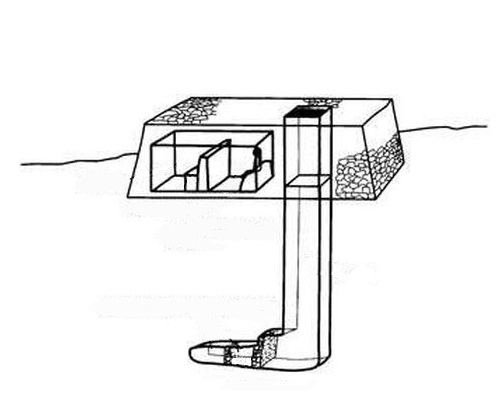
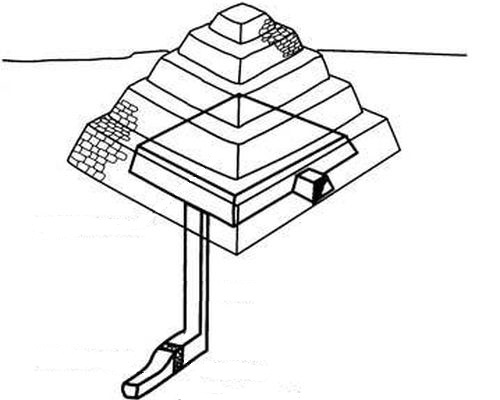
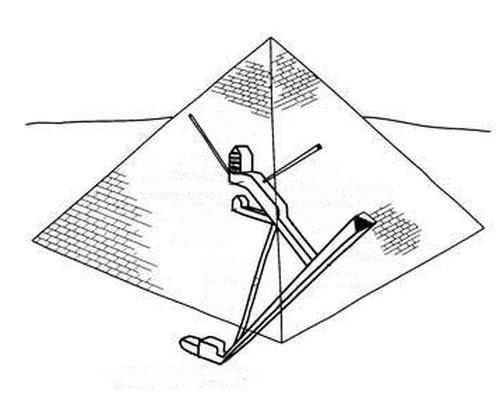
The first two dynasties used mastabas. Towards the end of the 2nd Dynasty, the first mastabas were built on a floor, and during the 3rd dynasty the pyramids with degrees appeared. The best known is the famous pyramid of Djoser, pharaoh of the Third Dynasty, but the most curious is the pyramid of Houni, the last pharaoh of the 3rd dynasty. It consisted of 7 degrees to which an 8th was added later, at the time of its transformation into a smooth-faced pyramid. It was probably his son Snefrou, founder of the Fourth Dynasty, who commissioned this work on his father's tomb. Note that Snefrou was the father of Khufu, who is credited with the largest of the Giza pyramids. Snefrou also made himself a pyramid, but the latter is a transitional link in architecture. Indeed, it is the first smooth-faced pyramid, but it was modified during construction. The inclination of the walls was revised to a more modest slope as the work progressed, giving it a crushed appearance compared to the others. We speak of a rhomboidal pyramid, that is to say a pyramid whose inclination is not constant.
Smooth-faced pyramids appeared during the Fourth Dynasty with the construction of the Necropolis of Giza, which marks the peak of pyramid structures in Ancient Egypt. Subsequently, pharaohs of the fifth and sixth dynasties were built with pyramids smooth faces more modest (sometimes), or were buried in mastabas very large (often).
Disparate pyramids
If we take a closer look, there are many ancient pyramids in Egypt. More than 130, if we only count monuments of a certain size (15-20m minimum). Their states of conservation are very variable, ranging from pyramids barely damaged by the weather to piles of stones barely distinguishable from the surrounding hills. But what really differentiated them was especially the times at which they were built. We thus distinguish several phases in what we call "the period of the pyramids", a period that goes from the beginning of the third dynasty (XXVII century BC), during the Old Kingdom, to the second intermediate period, after the Middle Kingdom (XVIIIth Dynasty, during the 16th century BC).
The smaller pyramids are the provincial pyramids that were built at the end of the Third Dynasty. The most impressive date from the phase of the "giant pyramids", during the IVth Dynasty. During the 5th Dynasty the pyramids evolved and were enormously written internally. The ancient Egyptians engraved texts that were to help Pharaoh reach the sky.
As we can see, there is a lot of pyramid style. One of them is called "slices", another is a central nucleus on which stepped sides were attached. There are pyramids with degrees and pyramids with smooth faces, pyramids with variable inclination, low or high inclination, etc.
But is there a historical coherence to all these styles?
Evolution of the architectural style
Yes, there is an architectural coherence between all the pyramids, despite what one might believe.
The first pyramids were pyramids with degrees, they have the shape of a staircase on all four sides. It was the simplest way to build it, this form was born from the very first pyramid attempt, that of Djoser. It is the famous Imhotep who had it built for his pharaoh Djoser. He built a second mastaba on the funeral mastaba, forming a pyramid embryo. Later he built 4 degrees and formed a real pyramid, which will be enlarged to 66m tall for 6 degrees.
Once the construction technique was acquired, other pyramids were built on the same model. Then, Pharaoh Snefrou tried to make a pyramid with smooth faces, but it was a novelty such that it did not succeed at first blow. Its first pyramid was a step pyramid, the famous Meidum pyramid, famous because it was transformed without success into a pyramid with smooth faces. Once made, Snefrou tried to make a pyramid with smooth faces, it will be the famous rhomboid pyramid, on the necropolis of Dahshur. Its base was much larger. It rose normally, but alas the architects could only see that the mass of blocks needed to complete it would not ensure its stability. Rather than stopping it and remaking it, they changed its inclination and obtained a pyramid with two slopes: The base has a steep slope, the summit a smaller inclination. This pyramid, still has its limestone coating, is called "Pyramid."
As Snefrou stubbornly built a third pyramid, taking care to avoid the problems previously encountered, and it worked: The red pyramid is the first smooth-faced pyramid in history. If nowadays it has lost its coating, it is still in place, in the necropolis of Dahshur (25Kms south of Cairo). From there his successors were able to build monuments higher and higher, since the technique was developed. Thus appeared the phase of the "giant pyramids", with in addition to the red pyramid, the famous pyramid of Khufu and Khafra on the Giza plateau.
Later, the pyramids became smaller and respected a uniformity that will no longer be questioned by their pharaohs.
The different periods
As often in the architectural, literary or cultural currents, the appearance of a style is accompanied by an evolution of this style. It always begins with the will of precursors who grope, try to create the style, appropriate it before it knows a recognition and reaches (usually quickly) its climax. Then there is a phase of stagnation and slow decline, which, after a while, accelerates and falls sharply. Then comes a period of "rebound" during which the style is brought up to date, sometimes baroque, before finally disappearing.
The habit of being buried under pyramids came as early as the Third Egyptian Dynasty, relatively early. Here are the different stages of the evolution of the pyramids over time.
The Step Pyramids (Third Dynasty)
The step pyramids represent the first phase of the pyramid period. These are improved mastabas that show the possibilities offered by Egyptian architecture, from the moment the population lives in a certain ease and the economic boom is there.
Learn more about the step pyramids.
Provincial Pyramids (3rd and 4th Dynasties)
These pyramids are not smooth-faced, they are modest in size and lead architects to the construction of a much larger monument, although this is not their goal. They are called provincial pyramids because they are all built outside the capital.
Learn more about the provincial pyramids.
Smooth-faced pyramids (4th Dynasty)
These are the pyramids built essentially by Snefru, creator of the Fourth Dynasty. Construction techniques were advanced enough at that time to create smooth-faced pyramids. But it took several attempts to achieve this, these tests are mostly still standing and show some originality. We distinguish clearly what has sinned each time.
Learn more about the Smooth-faced pyramids attempts.
The giant pyramids (4th dynasty)
This phase is not the climax of the pyramid era, but the excessive phase. The pharaohs of that time took advantage of previous attempts to build their pyramids in large format, developing gigantic projects of 20,000 men over 20 years. These pyramids are, of course, those of the necropolis of Giza.
Learn more about the Giant pyramids.
The Golden Age of the Pyramids (4th and 5th Dynasties)
A veritable climax of the pyramid era, this period of calm reproduced the traditional pharaonic tombs over several generations, with pyramids smaller than the previous ones.
Learn more about theGolden age of the pyramids.
Pyramids with text (5th Dynasty)
The text pyramids arrived during the 5th dynasty. These are the ones whose interior, and especially the burial chamber, are engraved with many hieroglyphic texts. These are passages related to the funeral activity of the place, of course. These texts were compiled to form the "book of pyramids", in relation to the "book of the dead".
Learn more about the pyramids with texts.
The pyramids of the middle empire (12th and 13th dynasties)
These pyramids are those of the middle empire, the period of return to ancestral traditions, the one that sees the pharaohs seek to place themselves in the wake of their ancestors to sow their power.
Learn more about the pyramids of the middle empire.
The late pyramids (17th et 18th dynasties)
Finally, the last royal pyramids appear during the 17th and 18th dynasties. If the Egyptians continue, after the eighteenth dynasty, to build pyramids, it is never for their pharaoh. This period corresponds to the end of the pyramid era.
Learn more about the late pyramids.
Illustration of the different periods
Here is the list of the pharaohs of the first dynasties with their tombs, it shows the architectural evolution of the tombs of the pharaohs from the 3rd to the 6th dynasty.
The tombs of the kings of the First and Second Dynasties are found largely in the necropolis of Umm al-Qa'ab in Abydos. The mastabas are buried, for what is left of them, so we do not have general photos.
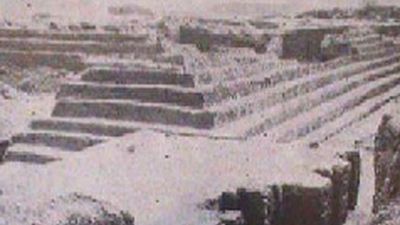
The mastaba 3504
Mastaba 3504
The first royal tombs, those of the first dynasty, were discovered and excavated in the middle of the 20th century. They have been numbered because their attribution to a pharaoh is not obvious, many are the mastabas which archaeologists do not control the origin.
The mastaba 3504 is a mastaba with a precursor stage of the pyramids to degree.
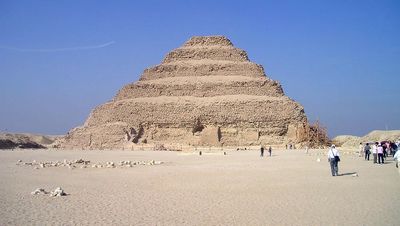
The step pyramid of Djoser
Pyramid of Djoser
Djoser is the founder of the Third Dynasty. He probably reigned from -2630 to -2611. Its degree pyramid is the best known of all those with this architecture because its shape is relatively well preserved. She is in Saqqara, in the necropolis of the pharaohs of the Third Dynasty.
Learn more about the pyramid of Djoser
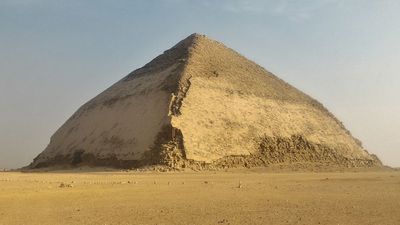
The rhomboidal pyramid of Snefrou
Snefrou rhomboidal pyramid
The first pharaoh of the fourth dynasty, Snefru, reigned from 2575 to 2551. He was the first to design a smooth-faced pyramid, bringing ancient Egypt into a new era in the evolution of pharaonic tombs. Its pyramid, built in Dahshur, was a failure, the builders could not keep the planned inclination, hence its strange appearance. We speak of a rhomboid pyramid, ie whose inclination is not constant.
This pyramid is in very good condition, it is the only one to have kept most of its siding. Among the best known, only that of Khafra has also preserved at its peak.
This failure led him to build another pyramid, the "red pyramid".
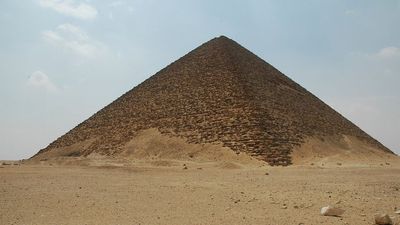
The red pyramid of Snefrou
Red Pyramid of Snefrou
The red pyramid was the second attempt to build a smooth-faced pyramid. It was a success. It is located in Dahshur, like the rhomboidal, and it is the third highest pyramid in Egypt (104.40 m)
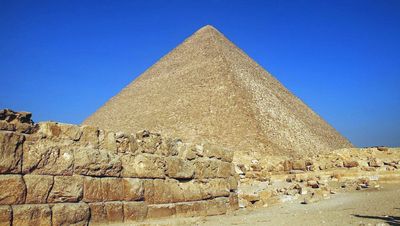
The pyramid of Khufu
Pyramid of Khufu
The pyramid of Khufu is the largest ever built by ancient Egypt, it is the symbol of modern Egypt is the only survivor of the seven wonders of the world.
Khufu was the second pharaoh of the fourth dynasty, son of Snefru and father of Khafra. The construction of its smooth-faced pyramid was a tour de force representing the culmination of funerary construction.
Learn mùore about pyramid of Khufu
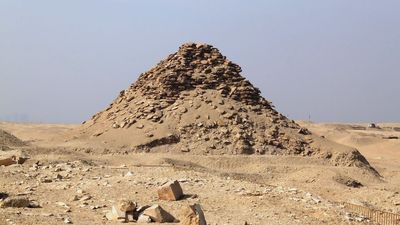
The Pyramid of Userkaf
Pyramid of Userkaf
Userkaf was the first ruler of the Fifth Dynasty. Its funeral complex is consistent with what was previously done, with a set of buildings including a pyramid-tomb, pavement, temples, etc. But the essential difference is the size of the pyramid, more modest than those of its predecessors. It is only 50m high, for 170m side.
This reduction movement had already begun under the 4th Dynasty, Menkaure had made a smaller pyramid (66m)






